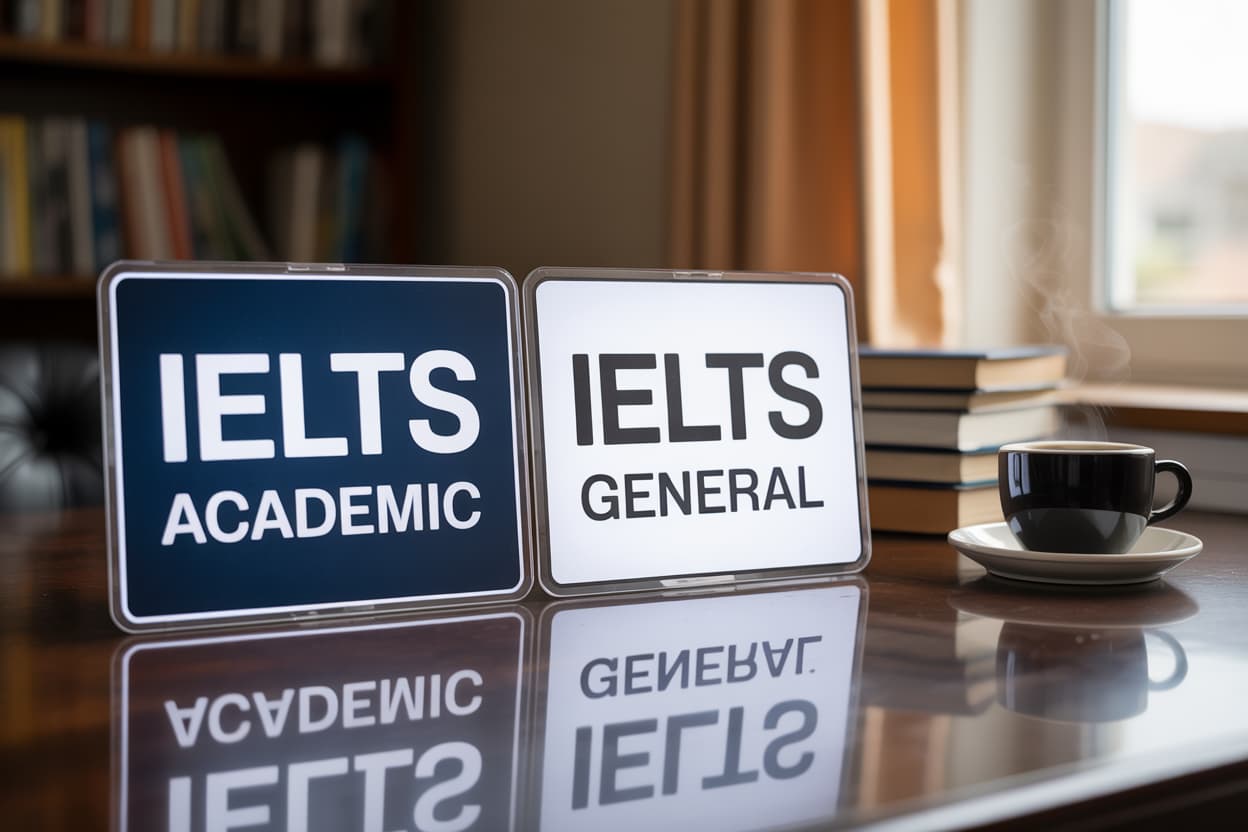IELTS Academic vs IELTS General: What’s the Difference?


The International English Language Testing System (IELTS) offers two primary versions of its exam: IELTS Academic and IELTS General Training. While both tests assess your English proficiency in key skills — Listening, Reading, Writing, and Speaking — they serve different purposes. The basic difference between the two is that the IELTS Academic exam is for students looking to pursue higher education abroad, whereas the IELTS General Training Exam is for candidates seeking migration opportunities to English-speaking countries.
🤔 Which Test Should You Take – IELTS Academic or IELTS General?
✅ IELTS Academic Practice Tests
The IELTS Academic test aims to evaluate the knowledge of candidates applying for higher studies or professional certifications abroad. It determines whether you are ready to start studying or training in the English language in an academic environment. Countries like the UK, US, Canada, Australia, and New Zealand widely accept IELTS Academic scores.
Purpose of the IELTS Academic Test:
🔹 To study abroad at the undergraduate or postgraduate level in an English-speaking country🔹 To apply for a Student Route visa (Tier 4) to study in a UK university
🔹 To work for a professional organization in an English-speaking country
✅ IELTS General Training Practice Tests
This version is for individuals seeking to migrate to an English-speaking country for secondary education, work experience, or permanent residency. It’s also suitable for those planning to undertake vocational training or study below degree level. The test assesses English skills in practical, everyday contexts reflecting social and workplace situations.
📄 Different Sections in IELTS Academic and IELTS General Training
There are four sections in the IELTS test: Listening, Reading, Writing, and Speaking. Let’s break them down below:
A. IELTS Academic Reading
The reading module consists of 40 questions to be answered in 60 minutes. You’ll read texts from journals, books, newspapers, and magazines, and express opinions. It’s divided into three sections with a total text length of 2,150–2,750 words. The passages reflect academic and professional topics relevant to English-speaking environments.
B. IELTS General Training Reading
Similar to the Academic format, this test features passages from advertisements, company guidelines, and brochures. It’s generally easier, as the content is based on everyday topics and real-world reading materials.
C. IELTS Academic Writing
The Academic Writing test includes two tasks. In Task 1, you must summarize data or information from a chart, graph, map, or diagram in about 150 words. In Task 2, you’ll write a 250-word essay discussing a point of view, argument, or problem in a formal academic tone.
D. IELTS General Training Writing
In Task 1, candidates must write a letter (formal, semi-formal, or personal) based on a given situation, such as explaining or requesting information. In Task 2, you’ll write an essay presenting arguments or opinions supported by examples. The tone can be more personal than academic.
E. IELTS Academic & General Training Listening (Common)
Both versions share the same Listening test, which consists of four recordings. You’ll have 30 minutes to answer questions based on these recordings:
➡️ Recording 2: A speech on social or everyday issues.
➡️ Recording 3: A discussion in an educational context.
➡️ Recording 4: A lecture or talk on an academic topic.
F. IELTS Academic & General Training Speaking (Common)
The Speaking test is also common to both formats and lasts 11–14 minutes. It includes a face-to-face interview with an examiner and is divided into three parts:
➡️ Part 1: Introduction and interview about your background, family, interests, and studies.
➡️ Part 2: A long turn — you’ll speak for 2 minutes on a given topic after 1 minute of preparation.
➡️ Part 3: Discussion — the examiner asks questions related to the topic from Part 2.
⚖️ Key Differences Between IELTS Academic and IELTS General Training
| Modules | IELTS Academic | IELTS General Training |
|---|---|---|
| Reading | Three long, complex passages from academic sources like books, journals, and research papers. | Three sections with shorter, simpler passages from newspapers, advertisements, and public notices. |
| Writing | Task 1: Summarize data from a graph, chart, or diagram. Task 2: Write an essay on an academic topic. |
Task 1: Write a letter based on a given situation. Task 2: Write an essay on a general topic. |
| Difficulty Level | More challenging, focused on academic English. | Generally easier, focused on everyday English. |
🤝 Similarities Between IELTS Academic and IELTS General Training
- Listening: The same for both formats — four recordings and 40 questions.
- Speaking: The same for both — includes a 3-part face-to-face interview.
- Duration: Total test time is approximately 2 hours and 45 minutes.
- Scoring: Both use a band scale from 1 to 9 for each skill and overall score.
💬 FAQs
1) What is the key difference between IELTS Academic and IELTS General Training?
The main difference lies in the Reading and Writing sections. IELTS Academic includes more formal and academic-level content, while IELTS General focuses on everyday situations and general topics.
2) Who should choose IELTS Academic?
If you are applying to a university or college to pursue an undergraduate or postgraduate degree, choose IELTS Academic.
3) Who should choose IELTS General Training?
If you are applying for permanent residency, citizenship, or vocational training in an English-speaking country, IELTS General Training is the right choice for you.
